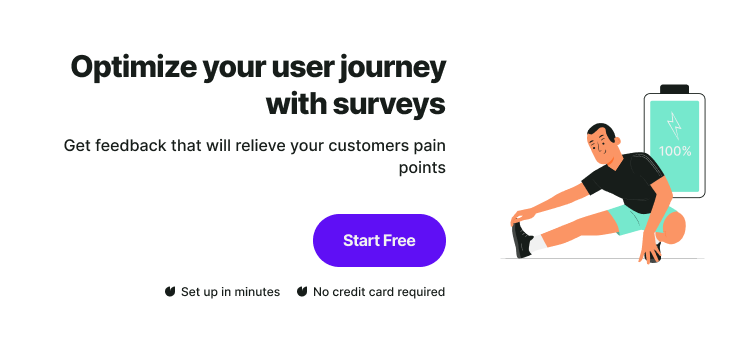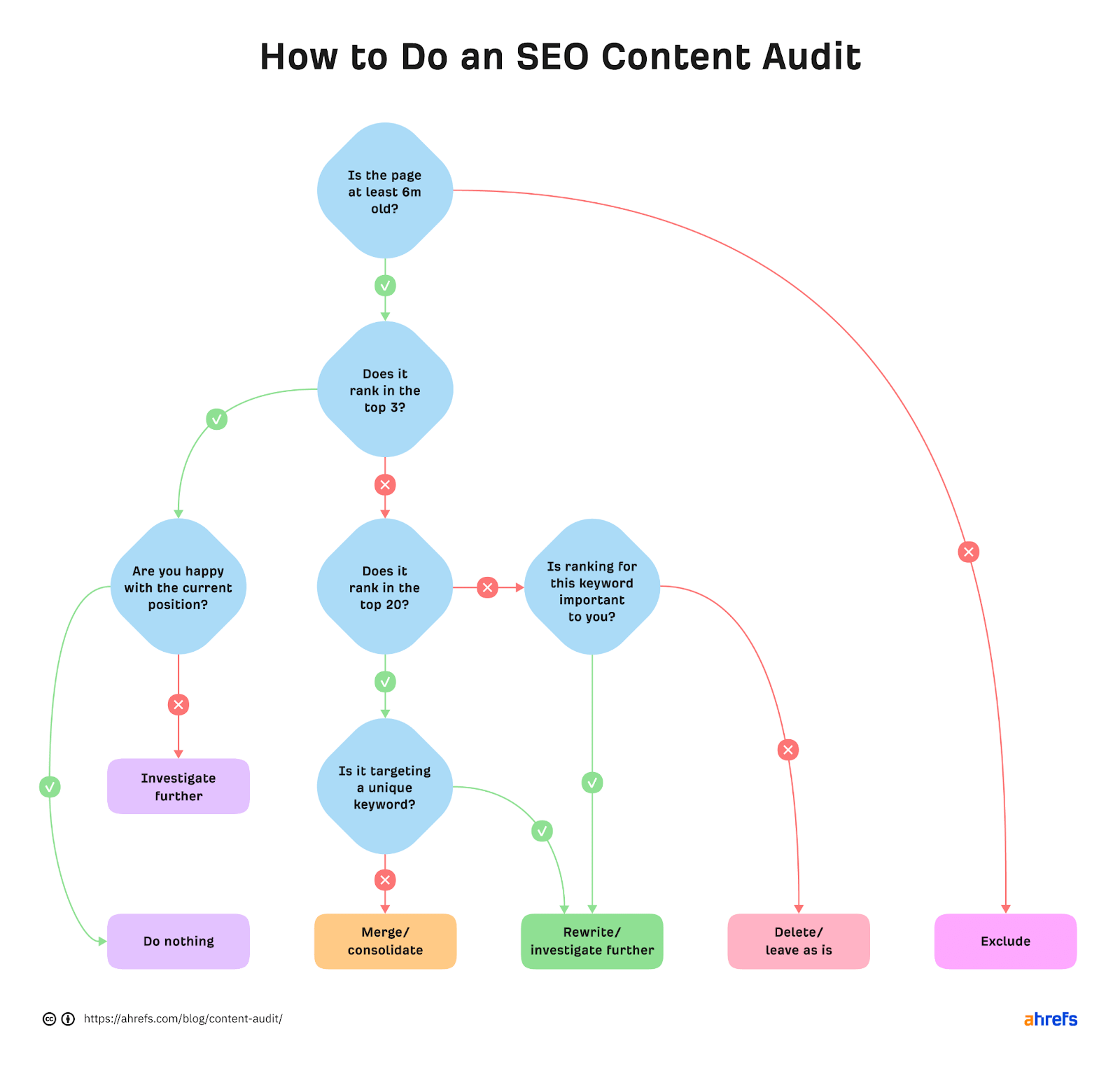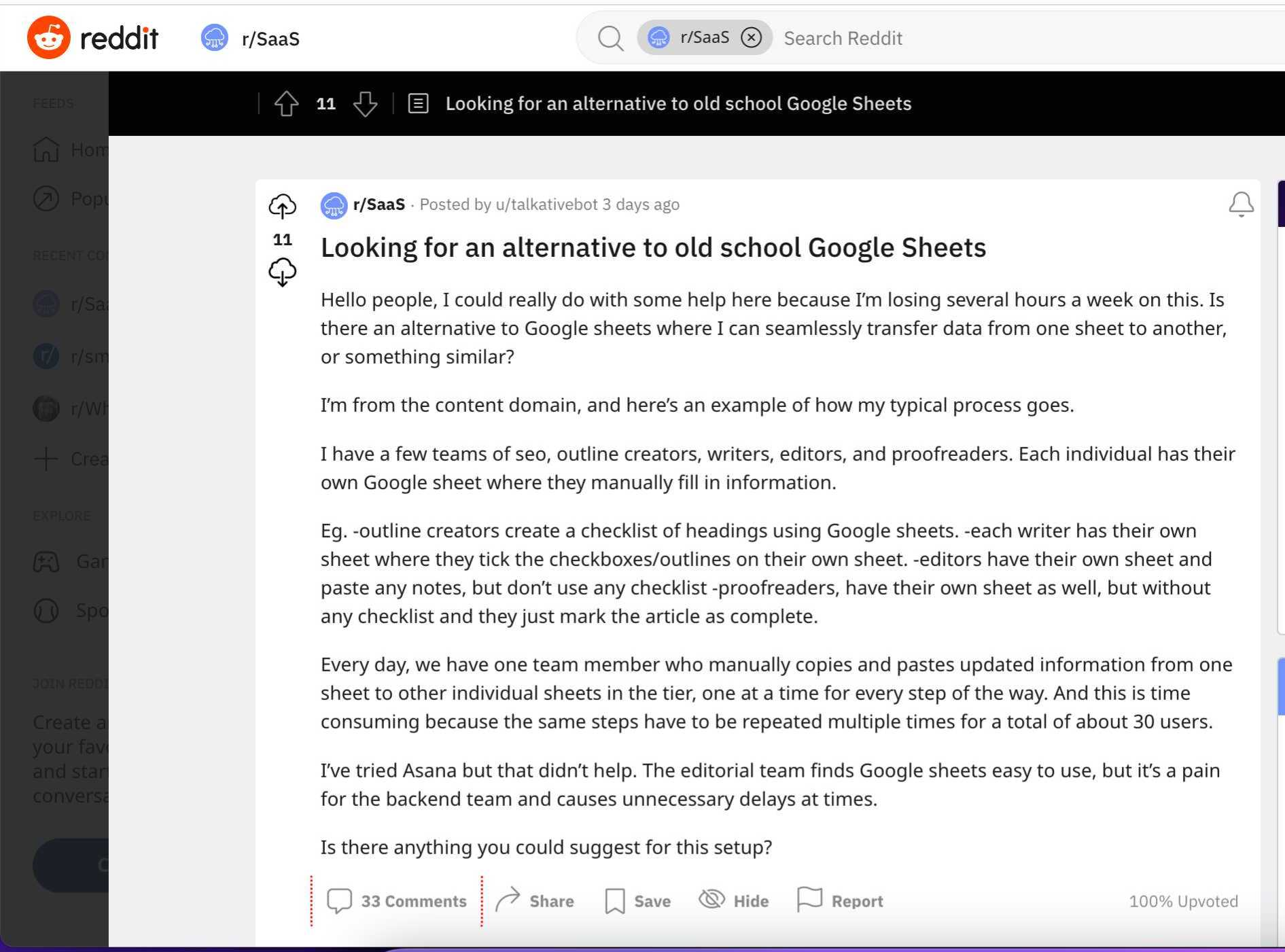Content marketing has been the growth engine for many brands across different industries for years now. Combined with the power of SEO, it can be a scalable way to grow your online presence and get more customers. And out of all the marketing methods out there, it still has the best ROI.
The problem is, you just can’t open a new Google Doc and get to writing. Before any of that, you need to do some proper content marketing research as a basis for your content work. To get started with that, we prepared a list of the exact steps you need to take to launch your content operations.
Let’s get our hands dirty.

Do a content audit
Have you already written content for your own website? Before going any further with new content, you should evaluate what you already have and determine how it’s performing. There’s a good chance you have some gold nuggets on your blog that you can learn from.

Dive deep into Google Analytics and Google Search Console to find out information such as:
- Which articles have the most visits
- Which pages bring the most conversions
- Which pages are consistently driving traffic
- Which pages performed well in the past but have dropped in traffic
You can also use your favorite SEO/SEM tool to dig into metrics such as:
- Which pages have the highest number of backlinks
- Which pages rank for the most keywords and what those keywords are
This is a great starting step as you’ll know what you have to work with. Your audience is likely consuming your content already so you’ll know what you should do more of and what is underperforming. You’ll also have a better idea of where you stand once you start doing competitive analysis.
If you don’t have any content on your blog, that can be both good and bad. On the one hand, you’re starting from scratch and you have no baseline for comparison. On the other, you’ll be able to see the results of your work immediately and you can spend time creating new content rather than refreshing something that was done years ago.
The learnings here can also come in handy if you want to update and refresh your existing content so it performs even better in the future. But more on that in the next step.
Take a look at the competition
You probably know well enough who your competitors are, but when was the last time you looked at their content? They may already have a well-oiled content operation or they could be in the same boat as you - just getting started. In the first case, doing a competitor analysis can be a great learning opportunity.
Round up your biggest competitors and find out the following:
- Do they have a blog?
- How often do they publish?
- What kind of content do they publish?
- How much traffic do they get from their content?
- How well does that content fare in search engines? What are the average search positions, especially for your money terms?
- What are their most successful pieces?
- How many backlinks do their pieces have on average?
This will give you a clearer idea of where you can compete and what you can do better. SEO tools such as Ahrefs allow you to enter a few competitor URLs and run a competitive analysis against your own domain. This is a quick way to compare your key metrics such as traffic, organic keywords, domain rating (DR), backlink portfolio, and more.
In the best-case scenario, you’ll find out you’re doing better than the competition. In the worst-case scenario, you’ll find that the competition is doing better, but that also means you can learn what is lacking in their approach and do better than them.
However, sometimes it’s worth looking beyond your immediate competition if you’re looking for inspiration. Major content-led websites such as HubSpot can give you inspiration on how to tackle content clusters, what frameworks and angles work well for B2B audiences and more.
In short, there really is no way you can lose with competitive research. But there is someone even more important than the competition - your customers.
Ask your customers what they want to read about
You should have some audience on your website as it is. Whether they came in from search engines or some other source, they want to learn more about you and consume what you have to tell them. There’s a good chance that they will return for more of your content - so why not ask them what they want to read about?
You can use a survey to collect feedback from your readers and embed it straight into your website. For example, Survicate has a content preference survey which you can show on your blog to find out what your readers want more of.
And it doesn’t stop there. With Survicate, you can send that same survey in an email, ideally to your newsletter subscribers or even your entire customer base. With just a few clicks, you can determine the next step in your content strategy.
Your customers can give you topic ideas and clusters your competitors may not have even thought of yet. And the best of all is that you’re building a connection with your customer base and showing them that you value their opinions.
So, it’s a win-win situation for everyone involved.
As time goes on, you’ll be able to see how your content resonates with your customers through metrics such as organic visits, your bounce rate, conversions and more. Remember that these metrics will show you quantitative feedback but surveys are the right way to grab qualitative insights.
💡 YOU MAY ALSO BE INTERESTED IN: Marketing research survey templates library
Do some keyword research
You can write about anything you want on your blog, but an article on how to make apple pies is not going to bring any business results. Behind every content piece on your blog should be a keyword it is targeting. Once again, you can use the help of tools such as Ahrefs or SEMRush for this process.
Here are the basics you should know about keywords for content research. Some of the main metrics and characteristics include:
- Keyword difficulty (on a scale from 0-100) - this is how hard it will be to show up on page 1 of search results for a given keyword
- Search volume - how many people search for a keyword on a monthly basis
- Intent - what the person searching for this keyword wants to do: learn, purchase, compare products, find a definition of a term, etc.
- Cost per click - how much it costs to run ads for this keyword in Adwords and similar PPC platforms
Choosing the ideal keywords for your own content strategy deserves another article (or five) so we won’t go into too many details here. The important part is that you need a keyword for every piece of content you put out because you want your content to drive results rather than just being your artistic expression.
Your customer feedback should give you some ideas for keyword research, but if you don’t know where to get started, no worries. Simply run a keyword competitor gap in Ahrefs and in a few moments, you’ll learn what keywords your competitors are targeting and how they are performing in search engine results.
Last but not least, you can use Google Search Console and Ahrefs to find out what keywords you are already ranking for. There’s a good chance that you could significantly improve your rankings with a content update or a refresh, before moving on to producing new pieces.
On finding the ideal keywords
Us content marketers love the feeling of finding a good keyword - it’s like a needle in a haystack. Imagine a keyword that:
- Has a high search volume
- Has low difficulty
- Has a high intent to purchase
Finding something like this is akin to finding a crisp $100 note on the street - it doesn’t get any better. But in reality, ideal keywords and opportunities like these don’t happen too often.
Instead, you’re forced to look for compromises. A keyword with a high search volume will often have a high difficulty and a low intent for purchase. A keyword with a high intent for purchase will have a low volume and high difficulty. You get the point - it’s never ideal.
This is why it’s important to think of keywords as stages of the sales funnel. One topic and keyword cannot inform, raise awareness and lead to sales. Instead, each keyword has its own place in the sales funnel and its own target audience.
You’re still writing to your customers - it’s just that not every customer is in the same stage of the sales funnel. So, choose your keywords accordingly, and don’t expect one keyword to be able to do it all at once.
In short, don’t expect one keyword to do it all. Some keywords can be used for pieces to raise awareness, others for pieces that bring immediate conversions. It helps to analyze the competition
Dig into online communities
Finding content ideas can be hard. Even experienced content marketers run into a wall every now and then and copying the competition is not always the best business move. To get new ideas, you need to research your customers and see what they are talking about in regard to your product, niche, or industry.
One of my favorite hacks is going to Reddit and researching subreddits related to the topic I am researching. There are other platforms but Reddit is my personal favorite because the community is strictly against advertising in any shape or form - it boils down to true and honest human interaction.

Once you find a topic that interests you, simply use your favorite keyword research tool to think of a keyword that could support it and you’re golden. And no matter what kind of product you run, getting feedback from Reddit is always valuable, even if it’s not for content purposes.
You can do something similar with Quora. Although it is less strict when it comes to advertising, the questions there can either inspire you for new topics or give you clues on how to improve your existing content.
If you sell products, marketplaces like Amazon are goldmines of ideas. Just tap into customer reviews, yours or the competitors - and you’ll have ideas for days.
One neat trick you can use is to sign up for a tool that tracks brand mentions, such as Brand24 or Mention.com. Just load up your brand name (or a competitor’s - or a relevant term you want to target) and you’ll get new mentions of that keyword every day.
To sum up, there is no shortage of good ideas for topics if you go where your (potential) customers are.
Wrapping up
Content marketing will remain one of the most viable tactics for growth in the years to come. And even though there is more noise each day, great content always finds a way and stands out with readers - and it also brings in new customers.
If you’re looking for a great way to do content marketing research without spending hours combing through different websites, just ask your customers what they want to read about. Sign up for Survicate today and start capturing your customers’ preferences with beautiful online surveys. Your free trial awaits you!

.webp)






.svg)
.svg)
.svg)

.svg)


.svg)







.svg)




.svg)

















.svg)






























.svg)

.svg)
.svg)

.svg)



.svg)







.svg)

.svg)



.png)
.jpg)



